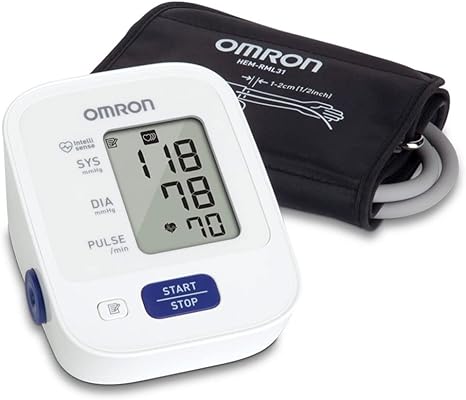Translating Blood Pressure Numbers
How does a Blood Pressure Monitor Work?
An inflatable cuff is often wrapped around the upper arm to test blood pressure. When a stethoscope is placed over the cuff, silence is heard. Air is forced into the cuff until circulation is stopped. The blood then starts to flow again and may be heard through the stethoscope when the air is gradually released from the cuff.
The greatest pressure point, or systolic pressure, is typically described as the height at which a mercury column is forced to ascend within a tube. The heart would propel a mercury column to a height of roughly 120 millimeters at maximum normal pressure. The sound of the blood pounding against the artery walls eventually fades and there is silence once more as more and more air is released from the cuff. This is because the cuff is exerting such minimal pressure. This is known as the Diastolic point of lowest pressure, which often causes the mercury to rise to around 80 millimeters.
Know Your Blood Pressure Numbers
It is essential to “Know Your Numbers” when it comes to blood pressure. When hypertension is present, years may pass before life-threatening consequences arise. Blood arteries become less flexible with time and more susceptible to the accumulation of fatty deposits, a condition known as atherosclerosis, due to increased strain on the inner walls of the vessels. Additionally, the heart must beat harder due to hypertension in order for the body to receive enough blood flow. The heart’s muscles become larger as a result of this increased workload, and eventually the larger heart can no longer pump blood as effectively. Heart failure, in which the heart is unable to pump enough blood to meet the body’s needs, can result from an enlarged heart.
Systolic and Diastolic readings
Because diastolic pressure is less prone to swings, it has historically been given more weight. Systolic pressure, on the other hand, may be just as important as diastolic pressure in predicting heart attacks, according to current research.
Thus, 120/80 (systolic/diastolic) or less is generally considered to be the normal blood pressure, which is expressed in millimeters of mercury (abbreviated as mm Hg). What do the numbers representing blood pressure mean? When the heart is beating, the pressure is represented by the greater (systolic) value. The pressure in the intervals between heartbeats is represented by the lower (diastolic) number. It is always reported with the systolic pressure first and the diastolic pressure second.
For instance, 122/76 (122 over 76) has a diastolic of 76 and a systolic of 122. For adults, a blood pressure result of less than 140 over 90 is regarded as normal. It is important to pay close attention to a systolic pressure of 130 to 139 or a diastolic pressure of 85 to 89. A blood pressure measurement that is equal to or higher than 140 systolic over 90 diastolic is regarded as elevated (high).
Rating:
Normal
Elevated
Systolic
< 120
< 130
Diastolic
< 80
< 80
Hypertension
Stage 1
Stage 2
Stage 3 (consult your doctor)
130-139
140-179
>179
80-89
> 90
>120
The blood pressure regulation mechanism fails in certain individuals, causing the body’s arteries to remain constricted and elevate blood pressure in the bigger blood vessels. Hypertension is defined as blood pressure that is consistently elevated and is more than 140/90 mm Hg, as most specialists agree. Ninety percent of all cases of high blood pressure are “essential” hypertension, which means that the reason is unknown. The remaining 10% of instances had high blood pressure because of diabetes, renal disease, or some other illness.
Hypotension
Most of the time, hypotension, or low blood pressure, is a sign of health, but in rare instances, it may indicate an underlying illness. However, dizziness can result from a specific type of transient low blood pressure. It’s called orthostatic hypotension and happens when you get up quickly. Your cardiovascular reflexes are quick to respond in order to keep blood from pooling in your legs and ankles, but sudden changes in position can strain them, particularly in elderly individuals.
 |
|
Self Monitoring your Blood Pressure Monitoring Blood Pressure at home Understanding Hypertension Blood Pressure Awareness Blood Pressure Facts |










Thank you for the great information. I will look at more of you information. Great website!